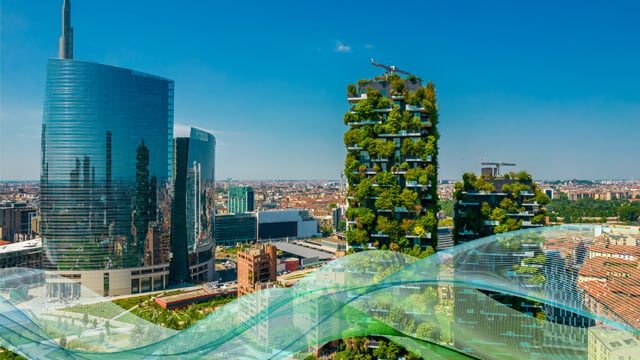District cooling
As global temperatures continue to rise and the demand for cooling energy increases, we must seek cleaner solutions to cool our buildings and cities. District cooling is a promising option to harness free cooling from sea water and air. It can efficiently cool entire communities from a centralized chiller plant and provide free cooling to large geographical areas. By eliminating the need for individual chillers in every building, district cooling can significantly reduce environmental impact.
Why Alfa Laval in district cooling?
- Alfa Laval has been a pioneering force in plate heat exchangers for almost a century, leading the industry in innovation and sustainability.
- We recognize the growing importance of district cooling and have developed solutions specifically tailored to your needs.
- Our heat exchangers excel in district cooling, saving costs, enhancing energy efficiency, and providing superior cooling performance.
- With a global network of service centres and AHRI certification, you can count on us to provide dependable and flexible heat transfer solutions.
Trend in Industry
The cooling industry is subject to various trends. Without improving energy efficiency, space cooling energy demand is projected to more than triple by 2050, consuming a tremendous amount of electricity. Factors driving the market include growing comfort demand, population growth, decarbonization goals, effective centralized cooling systems, energy costs, and energy-efficient performance.
Some of the trends in the district cooling sector are:
- Cities are implementing more district cooling grids to meet their cooling needs sustainably.
- Rising summer temperatures in traditionally "cold countries" like the Nordics are increasing the demand for cooling.
- The shift from local chiller plants to distributed cooling grids is improving efficiency.
- Microgrids, like those surrounding shopping malls, are becoming popular starting points for larger district cooling grids.
- Global electricity scarcity is driving the adoption of free and centralized cooling in district cooling grids.

Keeping The Louvre and Mona Lisa cold
Over the years, Alfa Laval has become a true partner and has contributed, thanks to its expertise and technology, to the performance of the Climespace energy network, which is the first district cooling system in Europe and one of the biggest in the world."
Jean Levezac, Head of Cluster Connections/Substations at Climespace Engineering
The benefits of district cooling
District cooling presents a sustainable and eco-friendly solution for commercial cooling needs. By centralizing cooling services, it optimizes energy use while eliminating the need for individual electrical chillers in buildings. This not only reduces energy consumption and greenhouse gas emissions but also offers financial benefits.
With space-saving advantages and the elimination of costs associated with individual chillers, district cooling proves to be a cost-effective option. The growing global demand for this technology has prompted the industry to explore advanced heat exchanger solutions, enabling increased capacity without requiring additional infrastructure investment.

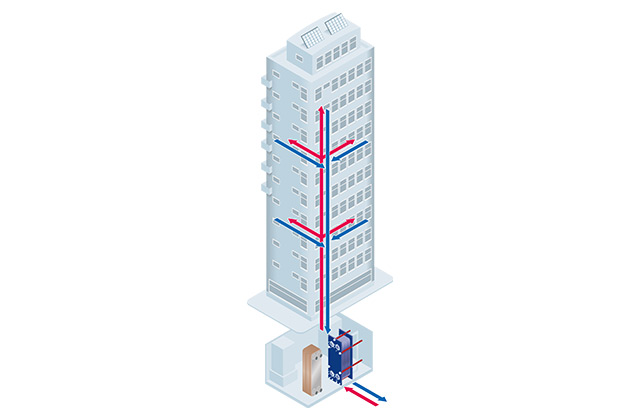
How district cooling works
District cooling efficiently distributes cooling water to buildings using heat exchanger technology from a centralized substation. The heat exchangers have two main purposes: optimizing energy usage by customizing water distribution based on specific building needs and acting as pressure-breakers to control potential damage in case of leaks.
The substation consists of a control unit, control valve, and heat exchangers. The control valve regulates water flow, while the heat exchangers modulate the temperature and capacity for each building. An energy meter measures flow rate and temperature, enabling the calculation of water consumption and final billing.
District cooling integrates energy from multiple locations, reducing stress on electricity demands, incorporating cleaner and free cooling sources, and contributing to net-zero emissions goals.
Free cooling from river or sea water
Utilizing sea and river water for free cooling significantly reduces energy consumption, with electricity only needed during extraction. This approach has a high Coefficient of Performance (COP), leading to substantial energy savings compared to traditional chillers. It also reduces the use of harmful refrigerants and fossil fuels, making it an environmentally friendly alternative.
Alfa Laval's plate heat exchanger technology is the ideal solution for safely utilizing various water sources, such as sea, brackish, river, or well water, for free cooling applications. This technology isolates the chilled water loop from sensitive equipment, eliminating the potential for corrosion, scaling, or unwarranted maintenance, ensuring reliable and consistent operation. The compact design of our plate heat exchangers offers space-saving benefits, allowing for much more efficient cooling with minimal fuss.
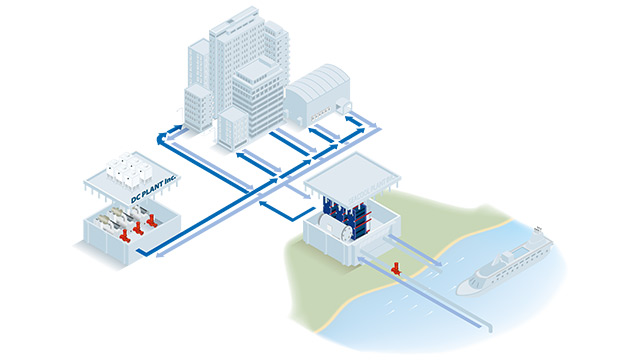
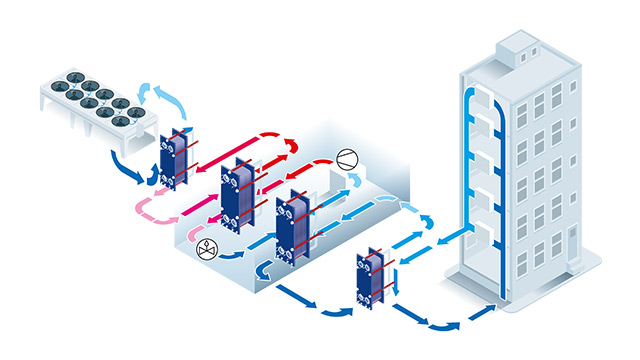
Excess heat in chiller plants can save money and decrease carbon footprint
A chiller plant's primary function is to produce cold, but it also generates excess heat as a by-product. Traditionally, this excess heat is dissipated through cooling towers and air coolers to regulate the plant's temperature. However, reusing this excess heat can be a highly beneficial solution for space heating and domestic hot water.
By recycling the excess heat generated by your chiller plant, you can reduce your reliance on fossil fuels and energy bills while decreasing your carbon footprint.
Absorption chiller – produce efficient cooling from heat
In settings where district heating and excess heat are released at elevated temperatures, a heat-driven absorption chiller can provide efficient cooling. With this approach, you can enjoy the advantages of free cooling without depending on water as your cooling source. Essentially, you can reduce both your electricity usage and the amount of conventional refrigerants required by utilizing the excess heat generated by your production processes.
How an absorption chiller works
Within the evaporator, the refrigerant, typically water, absorbs heat from the connected system, causing the air conditioning circuit to cool via a heat exchanger. Afterward, the refrigerant enters the absorber in the form of low-pressure vapor, which is absorbed by a liquid solvent, usually lithium bromide.
A pump increases the pressure of the refrigerant, and the solvent mixture proceeds to an interchanger, where it is preheated, often using a plate heat exchanger. The resulting high-pressure vapor is then directed to the condenser, where heat is released during the refrigerant's condensation process.
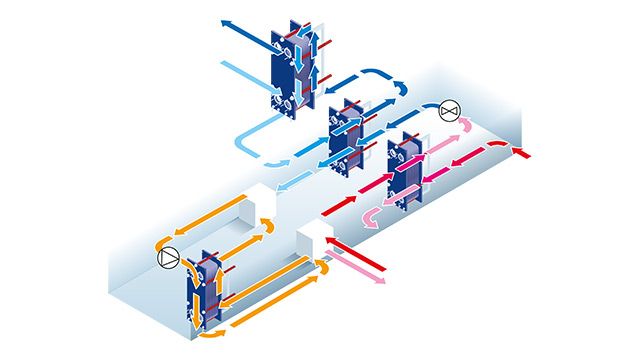
Уплътнени пластинчати топлообменници в рамка
- Гъвкави решения, които могат да се адаптират към работния режим, като гарантират най-висока топлинна ефективност
- Компактните конструкции спестяват място и са лесни за обслужване и поддръжка
- Решения за намаляване на замърсяването, напреженията и корозията за максимален период на безотказна работа
Запоени пластинчати топлообменници
- Олекотена конструкция с медно запояване с компактни габарити
- По-голяма топлинна ефективност от сравнимите тръбни многопластови топлообменници
- Гъвкави опции, подходящи за редица приложения с най-различни видове среди/флуиди
- Идеални за естествени хладилни агенти и такива с нисък потенциал за глобалното затопляне
Дифузионно споени топлообменници AlfaNova
- Конструкция от истинска 100% неръждаема стомана
- Силна устойчивост на корозия в агресивна среда
- Не позволява замърсяване с метали в питейна вода и други хигиенни приложения
- Висока топлинна ефективност и компактни габарити
Консултант? Системен интегратор?
Вие консултант ли сте? Вижте тук! С експертния си опит, придобит в резултат от десетилетия работа в областта на топлообмена, Alfa Laval предлага квалифицираните си ресурси за днешните предизвикателства в областта на отоплението и охлаждането. Открийте отговорите на сложните въпроси за всичко, което ви интересува – от енергийната ефективност до естествените хладилни агенти, заедно с полезните инструменти, които ви улесняват да намерите подходящата технология за вашето приложение.
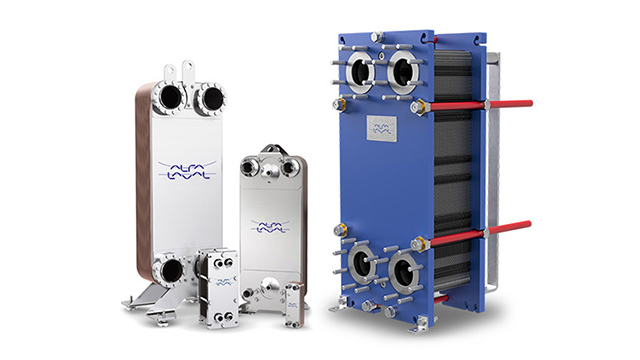
Сертифицирани от AHRI топлообменници за надеждна топлинна ефективност
Сертифицирането от Института за климатизация, отопление и охлаждане (AHRI) е единствената глобална независима проверка на топлинната ефективност, която дава гаранция от независима страна за това, че пластинчатият топлообменник ще работи съгласно публикуваните номинални данни от производителя. Alfa Laval предлага сертифицирани от AHRI пластинчати топлообменници с уплътнения, споени пластинчати топлообменници и дифузно-споени пластинчати топлообменници.
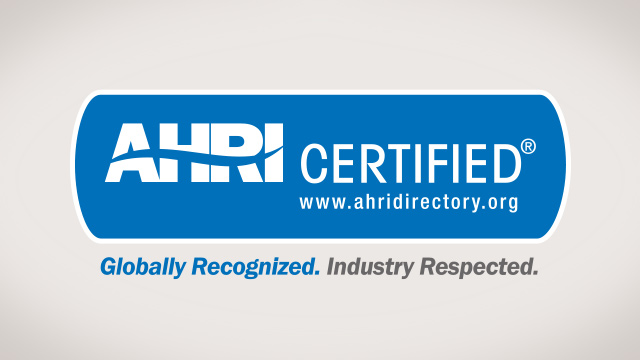
Осигуряване на ефективност за десетилетия
Лошо функциониращият топлообменник може да повлияе върху безопасността, качеството на продукта и разходите за енергия. Неизправността може да доведе до скъпо струващ престой и големи загуби в производството. Чрез редовно и профилактично техническо обслужване се запазва производителността, а работата на оборудването се поддържа безпроблемна и предсказуема.
Имаме експертния опит, за да ви помогнем, независимо дали имате проблем днес, искате да предотвратите бъдещи проблеми, или искате сами да разрешите проблема с нашия онлайн инструмент за отстраняване на неизправности.
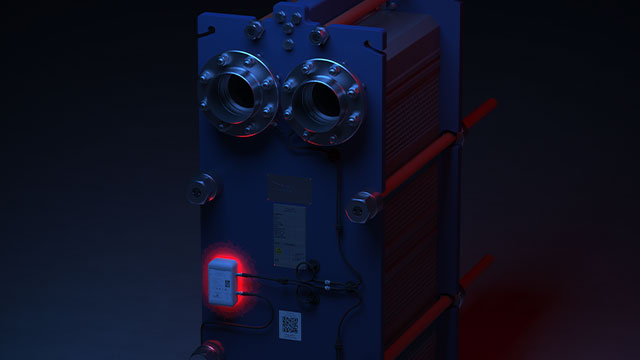
Digitalization for energy efficiency
Smart cities and digital intelligence could help cities to make progress toward meeting 70 percent of their Sustainable Development Goals. Digital services can already have a significant impact on heating and cooling systems in cities, making them more sustainable.
Enabling remote monitoring and performing dedicated analytics allow more precise and efficient operation, more informed decision-making, and targeted interventions. The development of more sophisticated and efficient heating and cooling systems is only possible through this digital transformation, which can provide reliable and affordable heating and cooling services to urban areas while reducing greenhouse gas emissions.
Alfa Laval и устойчивият град
Нашите градове консумират повече от две трети от световната енергия – ето защо те играят решаваща роля в борбата с климатичната криза. Значителен дял от потреблението на енергия в градовете е предназначено за отопление и охлаждане, което означава, че подобряването на енергийната ефективност е от първостепенно значение. Alfa Laval има почти вековен опит в областта на топлообмена и оползотворяването на топлина и се стреми да стане въглеродно неутрална до 2030 г. Позволете ни да бъдем ваш партньор в прехода към устойчиво бъдеще. Заедно можем да намалим въглеродните емисии по света.
